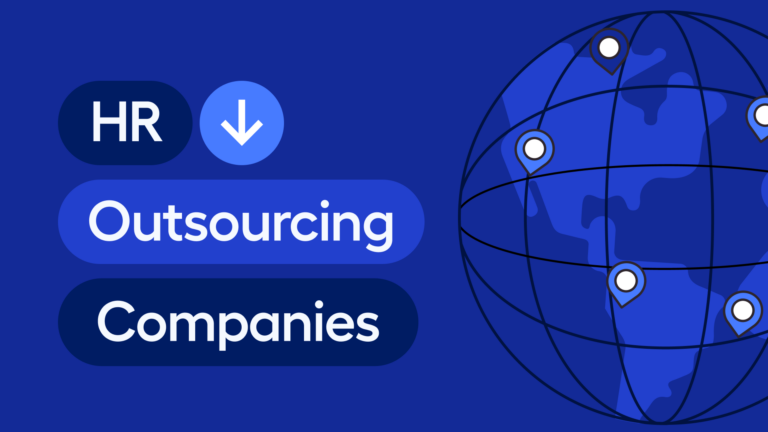Passionate about starting a venture?
Well, for the starters, sole proprietorships are always the best choice.
But as a ‘would be’ entrepreneur, you must know about sole proprietorships – like getting started and how to register a sole proprietorship business.
Are you thinking about how to start a sole proprietorship? Then, you have arrived at the right place!
This write-up is all about starting a sole proprietorship business.
Keep scrolling to know more about this business structure!
What is a Sole Proprietorship?
Becoming a sole proprietor is easy.
A sole proprietorship is the simplest business structure owned by a single individual.
In this form of business, an individual starts a venture under their name (or a fictitious name). One of the sole proprietorship features is that the venture is not separate from its owner.
Also, the entire ownership and control of the venture lie in the hands of the single proprietor.
So, if you want to open a sole proprietorship, all you need to do is start selling a product or a service. You will become a sole proprietor by default.
What are the Advantages and Disadvantages of Forming Sole Proprietorship?
Before we address how to start a sole proprietorship, you must know the pros and cons of a sole proprietorship business.
So, here are the main advantages and disadvantages of a sole proprietorship.
The advantages
- Easy Formation and Setup – Setting up a sole proprietorship is pretty hassle-free. There are no legal agreements as such. Plus, you do not have to deal with meetings or forming the board of directors, accounting for shares, etc. You can start operating the sole proprietorship almost immediately.
- Tax Filing – In sole proprietorships, preparation and filing of taxes are easy. The owner must use Schedule C. The owner must file the business income or losses through their income tax returns.
- Control and Decision-making – Once you create a sole proprietorship, you have the freedom to run it as per your choices. The business ownership, control, and decision-making power lie with the sole proprietor only.
- Low setup costs – The cost of starting a sole proprietorship or the cost of registering a sole proprietorship is comparatively low. Since no complex formalities are involved in establishing a sole proprietorship, the startup expenses are low.
- Easy to operate and manage – Sole proprietorships have no complex management structures. The owner is in charge of the business planning, decisions, and management. Plus, the total business revenue belongs to the owner.
The disadvantages
- Unlimited personal liability – Sole proprietorships come with unlimited liability. The business owner is personally liable for the business debts due to the absence of a separate entity concept. So, third parties can seize the owner’s assets in case of business bankruptcy or lawsuits.
- Raising capital – Financing a sole proprietorship is challenging as the credibility of these businesses is low in the industry. Banks, investors, and even vendors find it difficult to trust sole proprietorships. Unlimited liability of the owners, vague succession plans, etc., might be a few reasons behind low credibility.
- Definite life – Unlike corporations, sole proprietorships have a finite lifespan. That means if the owner ceases to exist, the sole proprietorship will quickly shut off. However, if the proprietor sells off the business or merges, it might continue to operate.
- Decision-making errors – Being your boss is cool. But you have a lot of responsibilities. In sole proprietorships, you get the freedom to decide, control, and manage. But this comes with a disadvantage too. The owner of sole proprietorships might make errors in decision-making as there are no partners or boards to consult.
- Multiple responsibilities – Taking on various responsibilities can be tough. From accounting to legal compliances, business growth, planning, sales, and whatnot. In sole proprietorships, the owner manages all these aspects single-handedly.
However, most sole proprietors take professional help for taxes, accounting, legal compliances, etc. However, most sole proprietors hire professionals for taxes, accounting, legal compliances, etc.
How can you Start a Sole Proprietorship?
Are you caught up in how to start a sole proprietorship or how to register a sole proprietorship?
This section details the steps of starting a new business as a sole proprietorship.
So, let’s explore the steps to set up a sole proprietorship!
1. Pick a business name
What is required to start a sole proprietorship? Of course, a name!
To get started, you need to develop a name for your business. Brainstorm and create a list of unique names that reflect your business status.
There are certain aspects to naming a sole proprietorship, like using your name or fictitious. Let’s jump to the next step to know more about these aspects.
2. Register the sole proprietorship name
When you have the list of names, the next thing you must do is register the business as a sole proprietorship.
Now, if you choose to run the business under your name like several freelancers do, registering the business name isn’t necessary. However, if you want to use a fictitious name or DBA (Doing Business As) for your business, you should get it registered.
For example, if Millie Jones runs a furniture business under her name, she can skip the sole proprietorship name registration. However, if she uses a fictitious name like Vintage Barn, she must register the name or DBA with the local authorities.
Note that the business name must be unique. Also, you might trademark your name for legal protection. Trademarking your name is significant when the business becomes a brand.
3. Get a website domain
Most businesses, nowadays, have a website from the very beginning. So, once you have settled on a name and completed the business registration of the sole proprietorship, purchase your domain.
The domain name is what identifies your website. Considering the above example, the domain for Millie Jones’ website would look something like www.vintagebarn.com.
It is best to choose the domain name same as your business name. But if it’s unavailable, choose a variation of your business name that’s similar. Also, you might not build your website right away. But buying a domain name at the initial stage is always preferable to ensure no other business buys it.
4. Get your business license and other permits
Once you decide to form a sole proprietorship, go by the book to prevent any hassles. Significantly, you obtain all the necessary permits for your business and your business licenses. Without licenses and permits, you might attract huge penalties.
The licenses and permits for your business will depend on the nature of the business and the area of operation. For instance, a health department permit would be necessary if you open a restaurant.
5. File your EIN (Employer Identification Number)
In most sole proprietorships, the owner’s Social Security number is the tax ID number. However, if you decide to hire employees or set up retirement plans, you need an employer identification number or EIN.
When filing taxes, you will need to provide this EIN to the Internal Revenue Service or IRS. You can get your EIN for free. It is a simple and easy process that you can carry out through the Small Business Administration’s website.
6. Open a new bank account for the business
As we have already mentioned in sole proprietorships, the business and its owner are not separate. Hence, the business income is directly passed as the owner’s income.
However, it is often recommended that you open a business account with the bank to keep your personal and business expenses separate. Further, if you have a separate bank account for your business, you can accept credit card payments and issue checks. It will also help you build a credit history for your business. This means getting loans will become comparatively easy.
Besides, a separate business account allows you to present your business profits and losses clearly to the IRS. Also, through the different accounts, you can detail the specific expenses like business travel, banking fees, office space, utilities, etc. You can write off these expenses on your taxes as well.
7. Obtain appropriate insurance coverage
Adequate insurance coverage is a must for sole proprietorships, especially because sole proprietors have unlimited liability. Proper insurance coverage can limit business risks and provide you protection against certain situations.
While insurance coverages depend on the nature of the business, here are a few must-have insurances.
- General liability insurance – This is basic business liability protection. It offers protection against physical injuries caused by third parties. It also covers product liability (in case a third party sues your business over product defects), advertising injury or reputational damage, and third-party property damage.
- Health Insurance – Adequate health coverage is necessary to protect you against medical bills, accident costs, etc.
- Auto Insurance – This insurance coverage is for your business vehicle or your vehicle used for business purposes. It helps cover financial losses in case of accidents or thefts.
- Disability Insurance – This insurance coverage will pay you if you cannot work due to some disability.
Apart from these insurance policies, don’t forget the workers’ compensation insurance when you start hiring. This insurance coverage will help you pay the medical bills, missed wages, and ongoing care if an employee gets hurt or suffers from a work-related illness.
Sole Proprietorship Startup Costs
Since we have discussed in detail the steps involved in starting a sole proprietorship business, it’s time to consider the costs associated. How much do one need to start a sole proprietorship business startup? Well, the answer is, it depends!
Based on the type of industry you choose and the location, costs vary. Some common factors that can add to the cost of starting sole proprietorship business are:
- Equipments
- Physical space infrastructure
- Marketing and promotion
- Expenditure on networking
- Legal and such professional services
- Formal dress code
- Licensing and associated taxes
- Banking charges
From the simplest business cards to branding your business, there are so many itineraries that determine the cost of a startup, which depends a lot on the niche and place of business.
Start your Sole Proprietorship with Multiplier
Starting a sole proprietorship is one tricky job! And one of the most challenging parts is onboarding skilled employees. And we can make it easier for you.
We recommend you to use a SaaS-based onboarding solution called Multiplier that can help you with the following:
- Swift onboarding of international employees
- Global payroll management in multi-currency
- Generating compliant contracts for freelancers, independent contractors and employees
For more information, Start your free demo now!
FAQs
Q. How much does it cost to start a sole proprietorship?
Depends on the industry you choose and the location.
Q. Can I start a sole proprietorship then switch to LLC?
Yes, you can.
Q. How old do I have to be to start a sole proprietorship?
Anyone above 18 years old can start a sole proprietorship. Even though children below 18 years can run a sole proprietorship, they will not be legally responsible until they turn 18.
Q. Is a sole proprietorship easy to start?
Yes, one can easily start a sole proprietorship if they follow the steps systematically.







